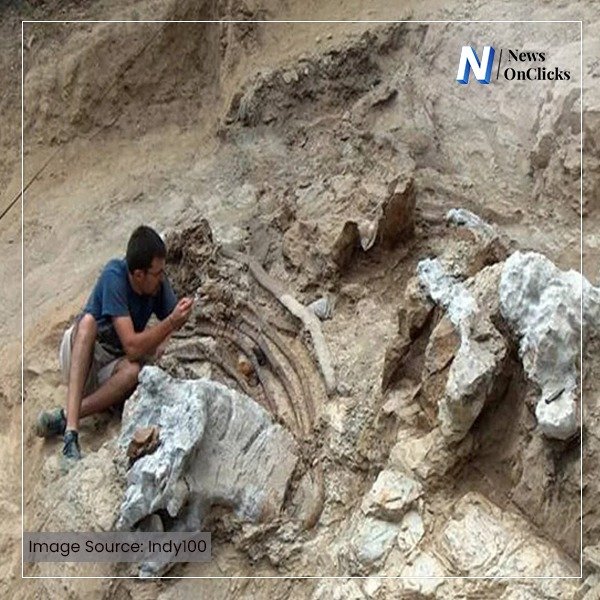
The recent devastating floods in Brazil resulted in a shocking discovery of a dinosaur fossil, demonstrating new perspectives on the prehistoric past. This event was completely out of the blue. The disastrous floods that happened across the numerous Brazilian states, particularly in the South.They discovered a virtually petrified skeleton of a dinosaur predicting it to be from the Creataceous period.
The Voyage of the discovery
The fossil discovered at Rio Grande do Sul, the most flooded place. Since the floodwaters decreased, it revealed gigantic areas of rock and sediments; exposing the hidden treasure beneath. The Paleontologists from the University of São Paulo reached to inspect the bones. It was first spotted by the locals of the village.
Initially the tests indicated that the fossil is from a theropod dinosaur species, which includes Tyrannosaurus rex and modern day birds. The fossil was in a great position, preserved and had a full skeleton. It is so unlikely and a noteworthy find in the world of paleontology.
Geological and Paleontological Significance
The discovery is noteworthy not only for its thoroughness but also for its geological implications.The position of the fossil in the sediment layers can expose the area’s prehistoric ecosystem.Brazil was completely different, with a warm,humid climate,huge river systems and rich flora fauna, during the Cretaceous period.
Paleontologists believe that the studying of the fossil and its surroundings will provide a better understanding of the dinosaur’s environment.This could lead to a better understanding of variety and distribution in South America, a continent full of major fossil discoveries.
The Effect of Floods
Flooding cause massive devastation, they accidentally played a crucial role in this finding. The flow of water was so intense that led to natural excavator and remove all the dirt that was over the fossil for million years. This event is the example of the intriguing dynamic link between natural calamities and paleontological findings. Such occurrences reveal geological and fossil data that have buried and undiscovered.
Broader implications
This discovery highlights the significance of Rio Grande do Sul as a paleontology site.It also adds to the growing amount of evidence that South America was home to a wide variety of dinosaurs.In the previous years, this region had produced several significant fossil discoveries, but Theropod fossil stands out due to its excellent preservation.
The discovery lured international interest that lead to additional money and resources for paleontological study in Brazil. The fossil sent to the University of São Paulo for thorough examination and study. Scientists are seeking to harvest DNA samples and perform other modern tests to gain better access to the understanding of the dinosaur’s biology and habitat.
In conclusion, the finding of dinosaur’s fossil following severe floods demonstrates New perspectives on the prehistoric past. Whilst the floods caused a massive destruction for humankind they also led them to discover this fossil. This remarkable discovery will significantly open paths of research and exploration.









